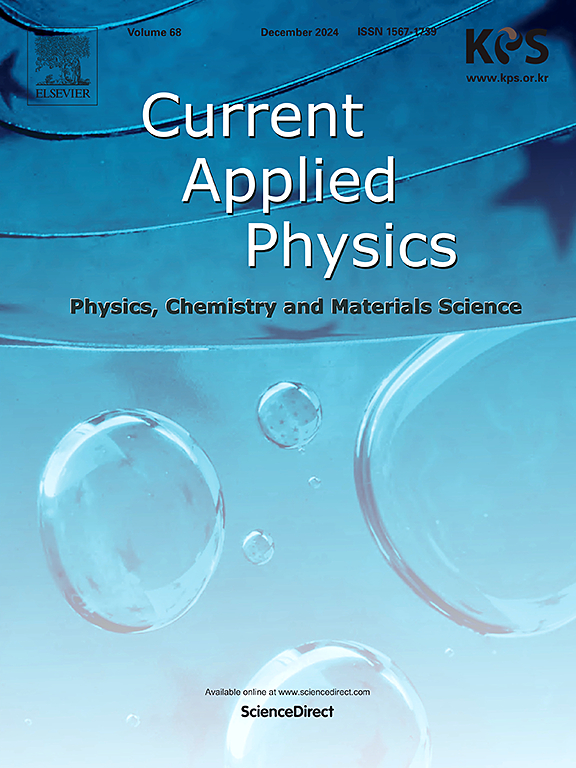Synthesis of Ag and Pt-loaded g-C3N4 nanocomposite catalysts for improved Hydrogen evolution reaction
IF 3.1
4区 物理与天体物理
Q3 MATERIALS SCIENCE, MULTIDISCIPLINARY
引用次数: 0
Abstract
This study reports the synthesis of g-C3N4, g-C3N4@Ag, and g-C3N4@Pt nanocomposites, along with their investigation into the hydrogen evolution reaction (HER). X-ray diffraction results confirmed the formation of pure g-C3N4, g-C3N4@Ag, and g-C3N4@Pt crystalline phases. The estimated crystallite sizes of pure g-C3N4, Pt nanoparticles, and Ag nanoparticles are 3.8 nm, 6.4 nm, and 16.4 nm, respectively. Transmission electron microscopy results reveal the 2D sheet morphology of pure g-C3N4 and the granular morphology of Ag- and Pt-loaded g-C3N4 samples. The electrochemical investigation reveals the superior HER performance of g-C3N4@Pt composite, surpassing the pristine g-C3N4 alone and g-C3N4@Ag. The g-C3N4@Pt exhibits a lower overpotential (100 mV at the current density of 10 mA cm−2), smaller Tafel slope (77 mV⋅dec−1), and long-term stability tests, which emphasize the practical applicability of these composites under HER conditions.

Ag和pt负载g-C3N4纳米复合催化剂的合成及其对析氢反应的影响
本研究报道了g-C3N4、g-C3N4@Ag和g-C3N4@Pt纳米复合材料的合成,并对其析氢反应(HER)进行了研究。x射线衍射结果证实了纯g-C3N4、g-C3N4@Ag和g-C3N4@Pt晶相的形成。纯g-C3N4、Pt纳米粒子和Ag纳米粒子的晶粒尺寸分别为3.8 nm、6.4 nm和16.4 nm。透射电镜结果显示了纯g-C3N4的二维片状形貌和Ag和pt负载g-C3N4样品的颗粒形貌。电化学研究表明,g-C3N4@Pt复合材料的HER性能优于单纯的g-C3N4和g-C3N4@Ag。g-C3N4@Pt具有较低的过电位(在电流密度为10 mA cm−2时为100 mV),较小的Tafel斜率(77 mV⋅dec−1)和长期稳定性测试,强调了这些复合材料在HER条件下的实际适用性。
本文章由计算机程序翻译,如有差异,请以英文原文为准。
求助全文
约1分钟内获得全文
求助全文
来源期刊

Current Applied Physics
物理-材料科学:综合
CiteScore
4.80
自引率
0.00%
发文量
213
审稿时长
33 days
期刊介绍:
Current Applied Physics (Curr. Appl. Phys.) is a monthly published international journal covering all the fields of applied science investigating the physics of the advanced materials for future applications.
Other areas covered: Experimental and theoretical aspects of advanced materials and devices dealing with synthesis or structural chemistry, physical and electronic properties, photonics, engineering applications, and uniquely pertinent measurement or analytical techniques.
Current Applied Physics, published since 2001, covers physics, chemistry and materials science, including bio-materials, with their engineering aspects. It is a truly interdisciplinary journal opening a forum for scientists of all related fields, a unique point of the journal discriminating it from other worldwide and/or Pacific Rim applied physics journals.
Regular research papers, letters and review articles with contents meeting the scope of the journal will be considered for publication after peer review.
The Journal is owned by the Korean Physical Society.
 求助内容:
求助内容: 应助结果提醒方式:
应助结果提醒方式:


